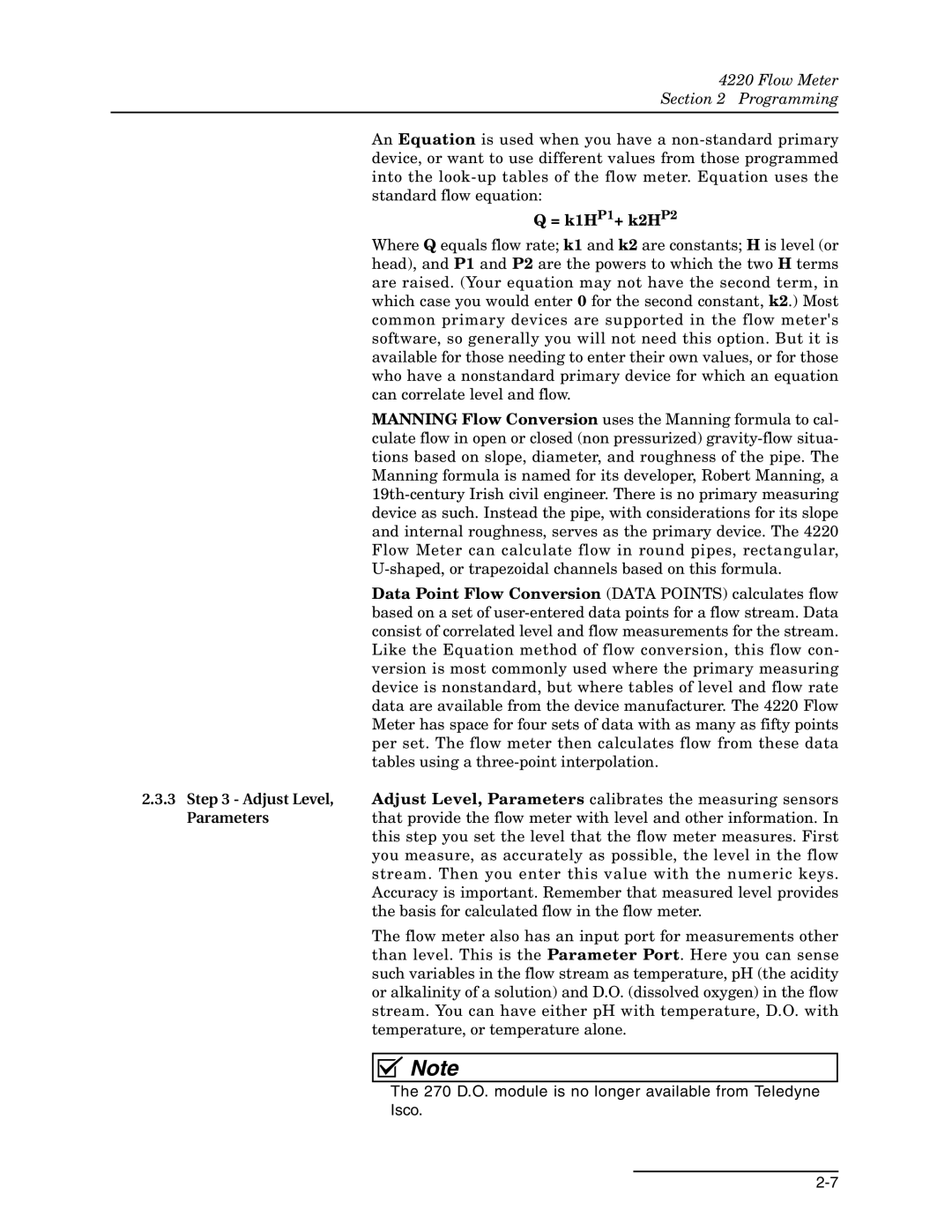
4220 Flow Meter
Section 2 Programming
An Equation is used when you have a
Q = k1HP1+ k2HP2
Where Q equals flow rate; k1 and k2 are constants; H is level (or head), and P1 and P2 are the powers to which the two H terms are raised. (Your equation may not have the second term, in which case you would enter 0 for the second constant, k2.) Most common primary devices are supported in the flow meter's software, so generally you will not need this option. But it is available for those needing to enter their own values, or for those who have a nonstandard primary device for which an equation can correlate level and flow.
MANNING Flow Conversion uses the Manning formula to cal- culate flow in open or closed (non pressurized)
Data Point Flow Conversion (DATA POINTS) calculates flow based on a set of
2.3.3Step 3 - Adjust Level, Adjust Level, Parameters calibrates the measuring sensors
Parameters | that provide the flow meter with level and other information. In |
| this step you set the level that the flow meter measures. First |
| you measure, as accurately as possible, the level in the flow |
| stream. Then you enter this value with the numeric keys. |
| Accuracy is important. Remember that measured level provides |
| the basis for calculated flow in the flow meter. |
| The flow meter also has an input port for measurements other |
| than level. This is the Parameter Port. Here you can sense |
| such variables in the flow stream as temperature, pH (the acidity |
| or alkalinity of a solution) and D.O. (dissolved oxygen) in the flow |
| stream. You can have either pH with temperature, D.O. with |
| temperature, or temperature alone. |
![]()
![]()
![]()
![]()
![]() Note
Note
